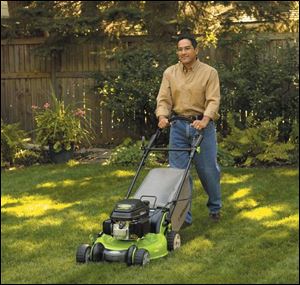
Tips for a Lush, Healthy Lawn
10/20/2005
Giving your lawn proper care in the fall will positively impact its health the following year.
Homeowners go to great lengths to keep their lawns in top shape during the summer. But when autumn leaves start to fall, many just abandon their lawns until the following spring. Many people are unaware that how you care for your lawn in the fall can significantly determine its health the following year. Here are five fall lawn care tips from the experts at Lawn-Boy to ensure a healthy lawn next spring.
Fall fertilizing
Fertilizing in the fall is important in helping your lawn strengthen its root system to ensure its survival over the winter and lushness in the spring. Look for fertilizers with slow-release nitrogen, which will help your lawn to grow more consistently and improve its overall health.
Keep watering
Make sure your lawn gets at least one inch of water per week. Even dormant turf continues to lose water and can be injured if it gets too dry. Infrequent and deep watering will produce the healthiest lawn. The best time to water is early in the day.
Seeding and weed control
Seeding is most effective in the fall. You should seed if your lawn is thin, has poor color, or is diseased. Fall is also a good time for weed control. Apply herbicides when temperatures are above 50 degrees, and only apply in areas where weeds are present.
Keep your lawn clear of debris
To prevent stress on your lawn from lack of light, remove leaves no later than two weeks after they fall. To make the job easier, use a bagging mower or leaf blower to collect leaves.
Fall is a good time to aerate
Aeration is the process of punching holes in the turf and removing soil cores. It reduces soil compaction, improves water and air movement, and makes your lawn more resistant to patch diseases. Aeration helps strengthen your lawn s root system and maintain a thicker, greener lawn with fewer weeds.